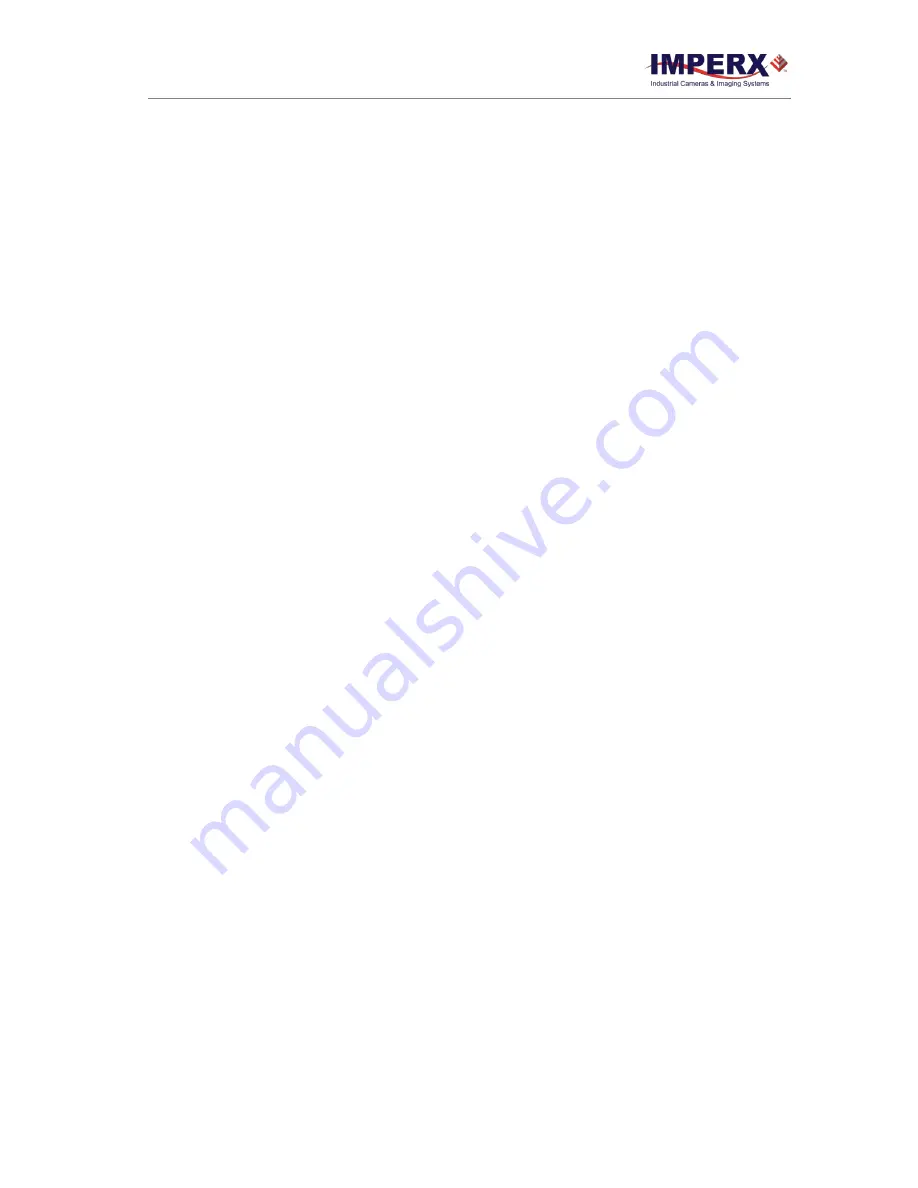
Cheetah KAC Camera User Manual | Camera Link (CLF) Interface
October 1, 2019
Page
87
of
135
Rev 7.2
distortions to the object in motion. The size of these distortions will vary based on the
read-out rate of the camera and the speed of the object in motion. Many applications are
not sensitive to these slight distortions. Rolling shutter mode has much more sensitivity
compared to global shutter mode and is useful in light starved applications.
5.3 ADC Digitization
You can select the analog-to-digital converter (ADC) digitization level within the image
sensor to trade off dynamic range for frame rate. If selecting a 12-bit digitization level, the
maximum frame rate drops to about 26 frames per second, limited by the ADC settling
time. If setting the ADC selector to 10-bits, the ADC settling time decreases, and the
maximum camera output frame rate increases.
5.4 Frame Time Control
5.4.1 Internal Line and Frame Time Control
The camera speed (frame rate) depends on the CMOS read-out time, which is the time
necessary to read all the pixels out of the CMOS imager. The frame rate calculation uses
the following Formula:
Frame rate [fps] = 1 / read-out time [sec]
(1.1)
You can program the camera to run slower than the nominal speed, thus preserving the
camera full resolution by extending the camera line time (the time required to read one
line out of the CMOS imager) and camera frame time (the time required to read the entire
frame out of the CMOS imager). Since the image sensor readout speed exceeds the
Camera Link interface output rate, the camera automatically sets a minimum line time
based on the number of output taps and bit depth selected and this sets the maximum
frame rate consistent with the available bandwidth of the output interface. If the frame
grabber is losing data, increase the line time control to match the frame grabber
acquisition rate to the Cheetah output rate.
With the Fixed Frame Period control enabled, you can increase the frame time from the
camera-determined minimum frame time to a maximum of 1 sec, with a precision of ~
1.0µs. In this way, you can reduce the output frame rate to match the application
requirements.
5.4.2 Camera Output Control
Cheetah camera supports the following Camera Link Outputs: Single Tap, 2-Tap, 4-Tap, 8-
Tap or 10-Tap Output. This corresponds to Base, Medium, Full or Deca Output. These
camera settings combined with the output bit-depth (8, 10 or 12-bit) to control the total
the interface bandwidth. The output interface clock speed for the Cheetah Camera is 85-
MHz (Camera Link Spec is 85 MHz maximum) It is important to match the camera’s output
to the frame grabber.






























